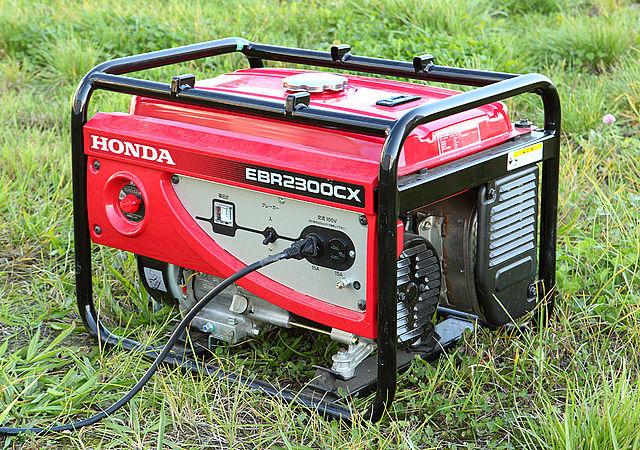Portable generators can be a lifesaver during power outages, but they also pose a significant danger if not used properly. According to the Centers for Disease Control (CDC), more than 400 people die each year in the U.S. from Carbon Monoxide (CO) poisoning, and the Consumer Product Safety Commission (CPSC) estimates about 70 consumers die each year from CO poisoning caused by portable generators. These incidents can occur when generators are used improperly.
Carbon monoxide is a colorless, odorless gas that is produced by burning fuel. When a portable generator is running, it produces CO, which can build up to dangerous levels if the generator is used in an enclosed space or if the exhaust is not properly vented. Inhaling high levels of CO can lead to headaches, dizziness, nausea, and in severe cases, unconsciousness, brain damage, and death.
As winter approaches, many people turn to portable generators as a means of providing backup power during storms or power outages. However, it is important to remember that these devices can be dangerous if not used correctly. Carbon monoxide is a colorless, odorless gas that is produced by burning fuel. When a portable generator is running, it produces CO, which can build up to dangerous levels if the generator is used in an enclosed space or if the exhaust is not properly vented. Inhaling high levels of CO can lead to headaches, dizziness, nausea, and in severe cases, unconsciousness, brain damage, and death.
- Never use a generator in a garage or other enclosed space, even if the doors are open. Using a generator in an enclosed space, even if the doors are open, increases the risk of CO buildup. The fumes from the generator will not be able to dissipate properly and can accumulate quickly. This can lead to dangerous levels of CO and can cause serious injury or death. This is the single, most important tip we can provide. It seems like every winter, like clockwork, there are a few heartbreaking stories about entire families that perish as a result of not paying attention to this advice.
- Look for a generator with a low oil shutdown feature, which automatically turns off the generator when the oil level is low, preventing engine damage and potential fire hazards. Running a generator with low oil levels can cause significant damage to the engine and can lead to a fire. A low oil shutdown feature will automatically turn off the generator when the oil level is low, preventing damage and protecting against fire hazards.
- Read and follow the manufacturer’s instructions for safe operation, including information on proper fuel handling and storage, as well as guidelines for routine maintenance and troubleshooting. The manufacturer’s instructions provide important information on how to safely operate and maintain the generator. Failure to follow these instructions can lead to serious accidents, injury or death.
- Check the generator’s oil level, air filter, spark plug, and battery before each use, and keep the generator dry, clean and well-ventilated while in operation. Proper maintenance and upkeep of the generator will help ensure that it is running safely and efficiently. A well-maintained generator is less likely to have problems, such as a fire or failure, which could cause injury or damage.
- Plug appliances directly into the generator using heavy-duty, outdoor-rated extension cords. Never use a generator to power a house’s electrical panel or plug it into a wall outlet. Plugging the generator into a wall outlet or the electrical panel can cause a power surge, which can damage the generator and appliances, and could lead to a fire. Using heavy-duty, outdoor-rated extension cords will ensure that the generator is properly grounded and that the power is distributed safely.
- Turn off the generator and let it cool down before refueling. Gasoline spilled on hot engine parts can ignite, causing a fire. Hot engine parts can ignite any gasoline that is spilled when refuelling, which can lead to a fire. It is important to turn off the generator and let it cool down before refuelling to prevent this from happening.
- Have working smoke and carbon monoxide detectors installed in your home, and check the batteries regularly. Smoke and carbon monoxide detectors will alert you to any potential dangers and allow you to take action to protect yourself and your family. It is important to check the batteries regularly to ensure that the detectors are in working order.
- Be aware of the signs of CO poisoning, such as headache, dizziness, weakness, nausea, vomiting, and chest pain, and take steps to avoid exposure. CO poisoning can be deadly and the symptoms can be mistaken for the flu. Knowing the signs of CO poisoning will help you recognize the problem early and take steps to avoid exposure.
- Never leave a generator running unattended, and be sure to turn it off and unplug appliances before bed or leaving the house. Leaving a generator running unatt ended can lead to dangerous situations, such as a fire or CO buildup. Additionally, appliances should be unplugged when the generator is turned off, to avoid power surges or electrical overloads. Being mindful of the generator’s usage and ensuring that it is turned off and unplugged before bed or leaving the house will help prevent accidents and keep you and your family safe.
In conclusion, portable generators can provide a vital source of power during an emergency, but they must be used with caution. By following these safety tips, you can protect yourself and your family from the dangers of CO exposure and other hazards associated with portable generator use. Remember, always keep your generator outside, at least 20 feet away from the house, and read and follow the manufacturer’s instructions for safe operation. Stay safe!
References:
- https://www.cpsc.gov/Newsroom/News-Releases/2021/Protect-Your-Family-During-the-Catastrophic-Winter-Storms
- https://www.cdc.gov/disasters/cofacts.html
- Image reference: https://commons.wikimedia.org/wiki/File:Honda_EBR2300CX_003.JPG










